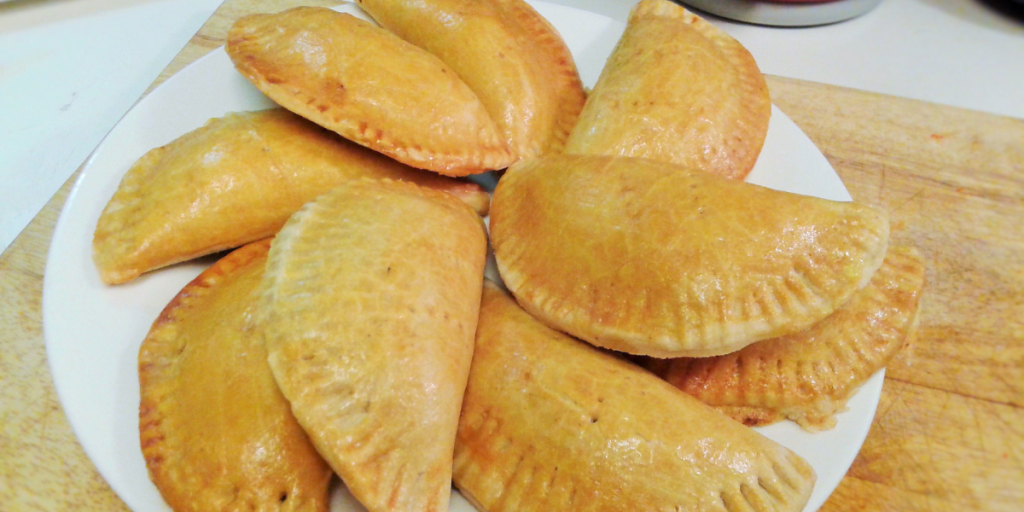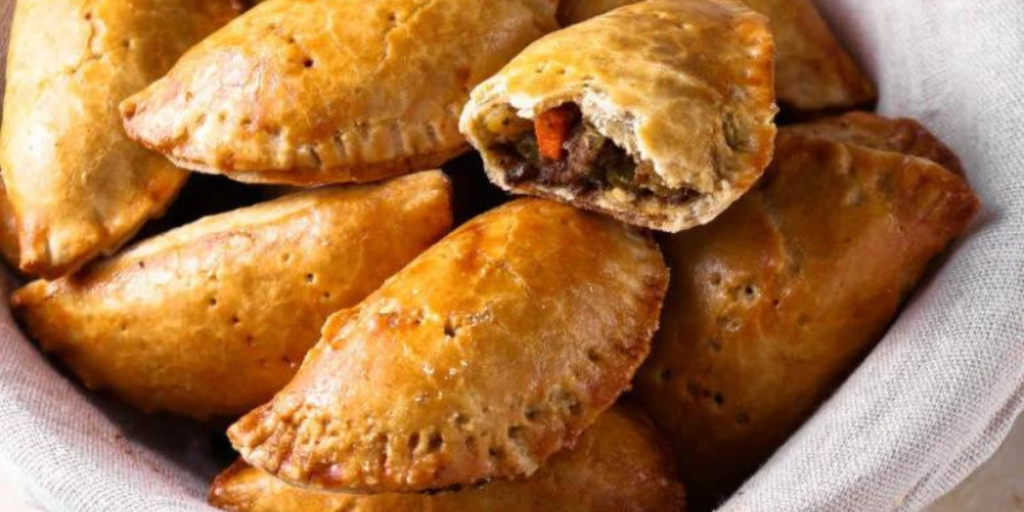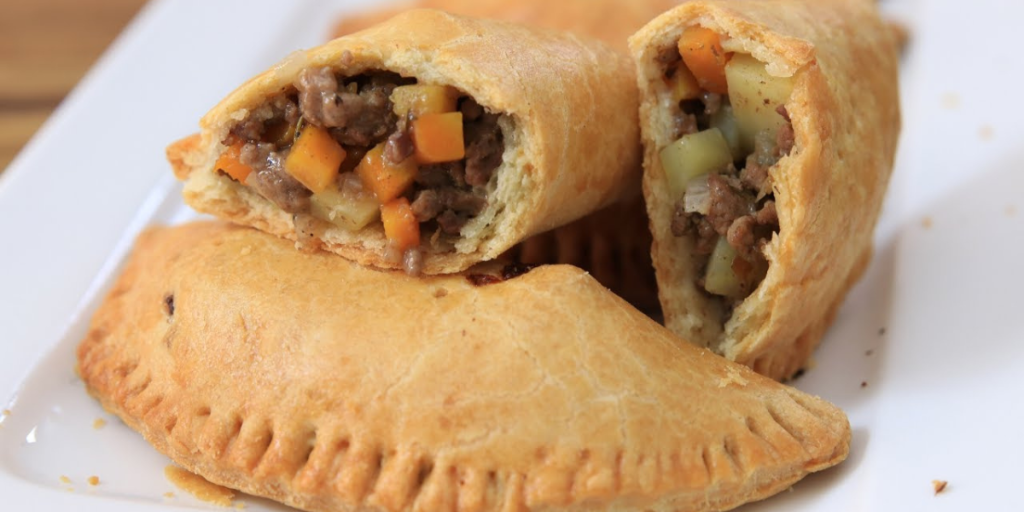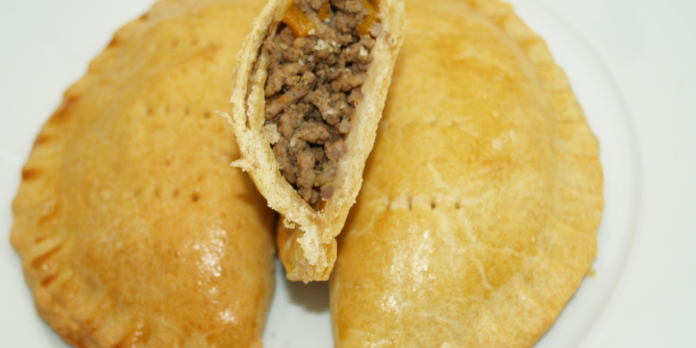Table of Contents

Nigerian meat pie is a cherished snack, celebrated for its flaky crust and savory filling. This dish is a staple in many Nigerian homes, often enjoyed at parties, gatherings, and as a quick snack on the go. To create the perfect meat pie, one essential element stands out: the thickener used in the filling. The right thickener not only enhances the texture of the filling but also prevents it from leaking during baking.
The Importance of Thickening in Meat Pie
When preparing a meat pie, it’s crucial to balance the moisture levels in the filling. Meat and vegetables release liquids as they cook, which can lead to a soggy crust if not managed properly. This is where thickeners come into play. They absorb excess moisture, allowing the filling to maintain a cohesive and appetizing texture. Without a proper thickening agent, your meat pie might end up with a watery filling, ruining the overall experience.
Best Meat Pie Recipe For 1 kg Flour
Common Thickeners for Nigerian Meat Pie
Several types of thickeners can be utilized to achieve the desired consistency for Nigerian meat pie. Below, we explore the most common options, highlighting their benefits, usage, and additional tips for effective incorporation.
1. All-Purpose Flour
All-purpose flour is the most traditional thickener for meat pie fillings. It’s widely available, affordable, and effective at absorbing moisture. When flour is cooked with the filling, it creates a thick, cohesive mixture that enhances the overall texture.
How to Use:
- After cooking the meat and vegetables, sprinkle flour over the mixture while it’s still on the heat.
- Stir well until the filling thickens.
- Typically, 1-2 tablespoons of flour is sufficient for a standard batch of filling.
Benefits:
- Affordable and easily accessible.
- Provides a neutral flavor that doesn’t overpower the filling.
- Can be used in a variety of recipes beyond meat pie.
2. Cornstarch
Cornstarch is another popular thickener known for its ability to create a glossy finish. It’s a more potent thickener than flour, meaning you need less of it to achieve the same effect. Cornstarch works best when combined with cold water to create a slurry before being added to the hot filling.
How to Use:
- Mix 1-2 teaspoons of cornstarch with cold water to form a slurry.
- Stir the slurry into the filling and heat until thickened.
Benefits:
- Gluten-free option.
- Creates a smooth texture in the filling.
- Quick to thicken, which can save cooking time.
3. Potato Starch
Potato starch is an excellent alternative for those looking for a gluten-free option. It provides a creamy texture and works similarly to cornstarch. Potato starch thickens at a lower temperature, making it easy to incorporate into your filling.
How to Use:
- Dissolve potato starch in cold water before adding it to the hot filling.
- Stir until the desired thickness is achieved.
Benefits:
- Gluten-free and suitable for various diets.
- Imparts a smooth, velvety texture to the filling.
- Good for making pie fillings that require a clearer appearance.
4. Arrowroot
Arrowroot is a natural thickener derived from the roots of the arrowroot plant. It’s gluten-free and creates a smooth, clear finish in the filling. Arrowroot is ideal for those seeking a healthier, more natural ingredient.
How to Use:
- Mix arrowroot with cold water to create a slurry.
- Add it to the filling over low heat to thicken.
Benefits:
- Non-GMO and often considered a healthier option.
- Provides a neutral flavor and maintains clarity.
- Ideal for delicate flavors and fillings.
5. Instant Mashed Potatoes
Using instant mashed potatoes as a thickener is an innovative approach that provides a hearty texture to the filling. It absorbs moisture effectively and adds a subtle creaminess.
How to Use:
- Stir 1-2 tablespoons of instant mashed potatoes into the filling mixture and cook for a few more minutes.
Benefits:
- Convenient and easy to use.
- Adds a unique flavor and creaminess to the filling.
- Can enhance the nutritional value by adding more carbohydrates.
Tips for Achieving the Perfect Meat Pie Filling

While selecting the right thickener is crucial, there are other factors to consider for creating an exceptional Nigerian meat pie filling.
1. Cook the Filling Slowly
Cooking the filling over low heat allows the flavors to develop fully and ensures that the vegetables soften properly. Rushing this process can lead to uneven cooking and poor texture. Slow cooking also allows the spices to infuse into the filling, enhancing the overall flavor profile.
2. Use Just Enough Liquid
Be mindful of the amount of liquid you add to the filling. Start with a small quantity and add more only if necessary. Too much liquid can make it challenging to achieve the right thickness. Monitor the filling closely as it cooks, and adjust accordingly.
3. Avoid Over-Thickening
While it’s essential to have a thick filling, you don’t want it to be overly pasty. Aim for a filling that is moist yet cohesive. Gradually incorporate the thickener until you reach the desired consistency, testing as you go.
4. Incorporate Flavorful Ingredients
To elevate the flavor of your meat pie filling, consider adding aromatics such as onions, garlic, and spices. These ingredients will complement the thickener and create a more complex flavor profile. Experimenting with herbs like thyme or bay leaves can also enhance the dish.
Making the Perfect Meat Pie Dough

Now that we’ve explored thickening options, let’s turn our attention to the dough, which is equally important in creating a delicious meat pie. The dough should be flaky, tender, and slightly buttery to complement the savory filling.
Ingredients for Meat Pie Dough:
- 500g all-purpose flour
- 250g margarine or butter (cold)
- 1 teaspoon baking powder
- 1 teaspoon salt
- 1/2 cup cold water
Instructions:
- Mix Dry Ingredients: In a large bowl, combine the flour, salt, and baking powder. Whisk together to ensure even distribution.
- Incorporate Fat: Cut the cold butter or margarine into the flour mixture until it resembles coarse breadcrumbs. This step is crucial for achieving flakiness in the crust.
- Add Water: Gradually add cold water until the dough comes together. Avoid overmixing, as this can lead to a tough crust.
- Chill the Dough: Wrap the dough in plastic wrap and refrigerate for at least 30 minutes. This step relaxes the gluten and enhances flakiness.
- Roll Out the Dough: Roll the chilled dough on a floured surface to about 1/4-inch thickness. Use even pressure to create a uniform thickness throughout.
- Cut Circles: Use a round cutter to cut circles from the rolled dough. Ensure the circles are large enough to hold the filling without spilling.
- Best Meat Pie Nigerian Recipe in 2024
Assembling and Baking the Nigerian Meat Pie
Once your filling and dough are ready, it’s time to assemble and bake your meat pies.
Assembling the Pies:
- Place a spoonful of the filling in the center of each dough circle. Be careful not to overfill, as this can cause leaking during baking.
- Fold the dough over to create a half-moon shape. Gently press the edges together.
- Seal the edges by pressing them together or crimping with a fork. This adds a decorative touch while ensuring a secure seal.
- Make a small slit on top of each pie to allow steam to escape. This is important to prevent the pies from bursting in the oven.
Baking:
- Preheat your oven to 350°F (180°C). Make sure the oven is properly preheated to ensure even baking.
- Arrange the pies on a greased baking sheet, leaving space between each pie for expansion.
- Brush the tops with beaten egg for a golden finish. This adds a beautiful sheen and enhances the presentation.
- Bake for 20-25 minutes until golden brown. Keep an eye on the pies as they bake to avoid over-browning.
Troubleshooting Common Meat Pie Issues

Even experienced bakers may face challenges when making meat pies. Here are some common problems and solutions:
1. Soggy Crust
Cause: Overly wet filling or underbaking.
Solution: Thicken the filling properly and ensure the oven is preheated. Avoid adding too much liquid to the filling.
2. Filling Leaks
Cause: Overfilling or improper sealing.
Solution: Avoid overfilling and seal the edges securely. Consider using egg wash on the edges for better adhesion.
3. Tough Crust
Cause: Overmixing the dough or too much water.
Solution: Mix the dough just enough and handle it gently. Using cold ingredients will also help maintain tenderness.
4. Browning Too Quickly
Cause: High oven temperature.
Solution: Lower the temperature or cover with aluminum foil. If the tops are browning too fast, loosely covering them can help.
Storing and Reheating Nigerian Meat Pies
To store meat pies, keep them at room temperature for a day or refrigerate for up to three days. For longer storage, freeze the pies and thaw them in the fridge before reheating. To reheat, use an oven for the best results, maintaining the crust’s flakiness.
Freezing Meat Pies
- Allow the baked meat pies to cool completely.
- Wrap each pie individually in plastic wrap and then in aluminum foil to prevent freezer burn.
- Label the bags with the date and type of pie for easy identification.
Regional Variations of Nigerian Meat Pies

Nigerian meat pies vary across regions, reflecting local tastes and ingredients. Each region brings its own unique twist to this beloved dish, creating a diverse range of flavors and styles.
Southwestern Nigeria
In the southwestern region, meat pies are often known for their spicier fillings. Locust beans (iru) and pepper are common ingredients, adding depth and richness. The use of spicy seasonings like cayenne or Scotch bonnet peppers can give these pies a distinct kick.
Northern Nigeria
In Northern Nigeria, meat pies tend to be smaller and are often fried rather than baked. They may include potato filling, which provides a different texture and flavor. The filling can also be spiced with local seasonings that reflect the rich culinary heritage of the region.
Eastern Nigeria
Eastern Nigerian meat pies often incorporate local vegetables, such as pumpkin leaves (ugu), for added nutrition and flavor. The filling can be adjusted to suit local preferences, sometimes incorporating fish or other meats. This regional twist makes each pie unique to its origin.
Serving Suggestions for Nigerian Meat Pie
Nigerian meat pies are versatile snacks that can be enjoyed in various ways. Here are some serving suggestions to enhance your meat pie experience:
1. With Dipping Sauces
Consider serving meat pies with a side of dipping sauces, such as:
- Chili Sauce: A spicy chili sauce can add a delightful kick to your meat pie.
- Ketchup: The sweetness of ketchup balances the savory flavors.
- Mayonnaise: Creamy mayonnaise provides a rich complement.
2. Accompanied by Salad
Serve meat pies alongside a fresh salad for a balanced meal. A simple green salad with vinaigrette can add a refreshing contrast to the rich filling.
3. With a Beverage
Pairing meat pies with beverages enhances the overall experience. Options include:
- Zobo Drink: A refreshing hibiscus tea that complements the savory flavors.
- Chapman: A fruity, non-alcoholic drink popular at Nigerian parties.
- Soft Drinks: Traditional carbonated drinks can also be a good match.
Nutritional Considerations
While Nigerian meat pies are delicious, it’s important to be mindful of their nutritional content. The combination of pastry, meat, and vegetables can provide a good source of energy but can also be high in calories and fats. Here are some tips to make them a bit healthier:
1. Use Lean Meats
Opt for lean cuts of meat, such as chicken or turkey, to reduce the fat content in the filling. Ground turkey can be a flavorful alternative to beef.
2. Add More Vegetables
Incorporating a variety of vegetables not only boosts the nutritional value but also enhances the flavor and texture. Consider adding carrots, peas, or bell peppers to the filling.
3. Choose Whole Grain Flour
Using whole grain flour for the crust can increase fiber content, making the meat pie a bit healthier. Whole wheat flour provides additional nutrients compared to all-purpose flour.
Finding the Best Thickener for Nigerian Meat Pie

In conclusion, choosing the best thickener for Nigerian meat pie is vital for achieving the right texture and flavor balance. While all-purpose flour is the most common choice, alternatives like cornstarch, potato starch, and arrowroot provide excellent options. Your thickener choice may depend on dietary preferences and the desired filling consistency.
Ultimately, the key to a perfect Nigerian meat pie lies in harmonizing the filling and crust. With the right thickener and techniques, you can create a mouthwatering meat pie that highlights Nigeria’s rich culinary traditions. Enjoy experimenting with various ingredients and thickeners to discover your ideal recipe!
Frequently Asked Questions (FAQ)
1. Can I make meat pie ahead of time?
Yes! You can prepare the filling and dough in advance. Store them separately in the refrigerator for up to a day. Assemble and bake just before serving for the best results.
2. What can I substitute for meat in the filling?
For a vegetarian option, consider using mushrooms, lentils, or tofu. These ingredients can be seasoned to mimic the flavor of meat and create a satisfying filling.
3. How can I ensure my crust is flaky?
Using cold ingredients and not overworking the dough are key factors in achieving a flaky crust. Refrigerating the dough before rolling it out also helps maintain its texture.
4. Can I freeze meat pies?
Absolutely! Meat pies freeze well. Just ensure they are fully cooled, wrap them tightly, and store in an airtight container. Bake from frozen, adjusting the baking time as needed.
5. What spices work best in meat pie filling?
Common spices used in Nigerian meat pies include thyme, curry powder, and black pepper. You can adjust these spices based on your taste preferences.
Final Thoughts
Creating the perfect Nigerian meat pie is an art that combines the right ingredients, techniques, and a bit of love. By selecting the best thickener and carefully preparing your filling and crust, you can craft a delicious pastry that delights everyone who tastes it. Whether enjoyed at a gathering or as a simple snack, Nigerian meat pies are sure to impress.





















